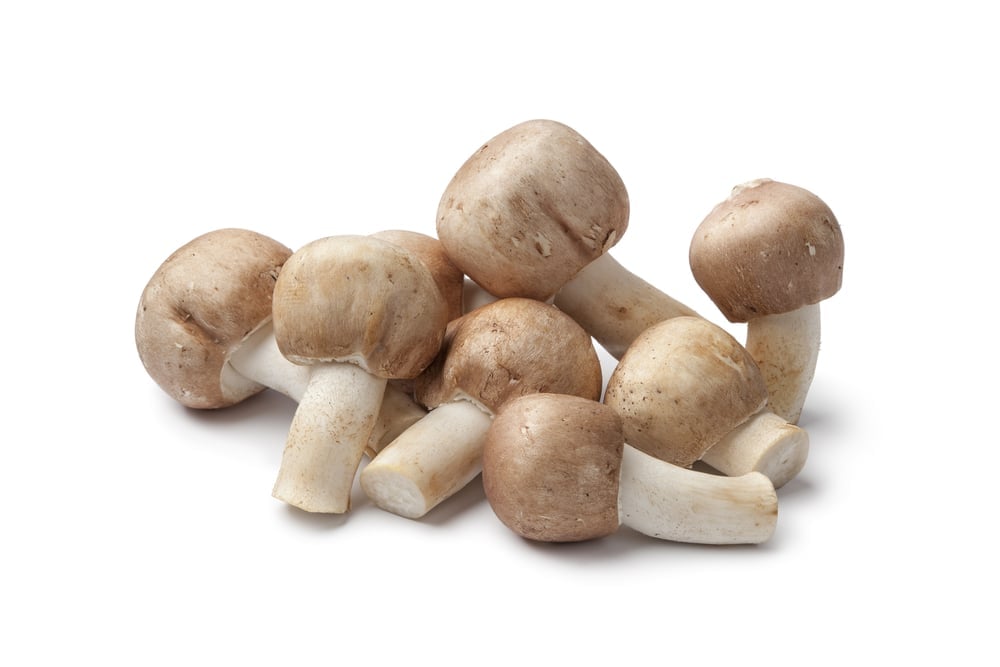
Introduction to Agaricus subrufescens
Historical Background and Discovery
Agaricus subrufescens, commonly known as the almond mushroom or sun mushroom, was first discovered in eastern North America in the late 19th century. Initially popular as a cultivated edible mushroom, it gradually became a less common species in the market. More recently, the mushroom species growing wild in Brazil, often referred to as the Brazilian mushroom, has attracted significant attention due to its medicinal properties and has been widely cultivated.
Geographic Distribution and Habitat
This mushroom species is found in diverse geographical origins including North America, Brazil, and Western Europe. It thrives in various habitats and has adapted to different environmental conditions, making it a popular market mushroom in several countries.
Taxonomy and Synonyms
Genetic Analysis and Phylogeny
DNA sequence analysis and genetic analysis have clarified the taxonomy of Agaricus subrufescens, revealing its close relationship with species such as Agaricus blazei and Agaricus brasiliensis. These studies have helped to resolve previous confusion regarding its classification.
Synonyms and Nomenclature History
The species has been known by various synonyms over time, including Agaricus blazei and Agaricus brasiliensis. The nomenclature history has been refined through research by Richard W. Kerrigan and others, establishing Agaricus subrufescens Peck as the accepted name.
Amphithallic Reproduction Explained
Mating studies and hybrid progeny analyses have confirmed that Agaricus subrufescens exhibits an amphithallic reproduction pattern, which has implications for its genetic diversity and cultivation.
Chemical Composition of Agaricus subrufescens
Polysaccharides and β-Glucans Profile
The fruiting bodies of this medicinal mushroom are rich in polysaccharides, particularly β-glucans, which contribute significantly to its health-promoting benefits. These compounds have been extensively studied for their immunomodulatory and anti-cancer properties.
Other Bioactive Compounds
In addition to β-glucans, Agaricus subrufescens contains other bioactive molecules such as ergosterol, agaritine, and blazein. These compounds have been identified through chemical analysis and are believed to contribute to its therapeutic effects.
Nutritional Content
The mushroom’s chemical composition includes high levels of crude protein, crude fiber, and crude fat, along with essential vitamins and minerals. This nutritional profile supports its use as a health food.
Methods of Chemical Analysis
High performance liquid chromatography (HPLC) and other advanced techniques have been employed to analyze the chemical constituents of Agaricus subrufescens, providing detailed insights into its bioactive compound profile.
Cultivation Techniques and Agronomic Behavior
Composting Process and Substrate Selection
The cultivation of Agaricus subrufescens relies on an optimized composting process using selected agricultural wastes such as wheat straw, rice straw, and other organic materials. Proper substrate selection is crucial for successful mushroom cultivation.
Temperature Range and Humidity Control
Maintaining an appropriate temperature range (typically 25–28 °C for mycelial growth and 22–25 °C for fruiting) and relative humidity is essential for optimal mycelial growth and fruiting body development.
Casing Layer Management and Ruffling Techniques
The casing layer plays a vital role in mushroom production. Techniques such as ruffling improve gas exchange and promote uniform mushroom production, enhancing biological efficiency.
Supplementation Effects on Yield and Biological Efficiency
Supplementing compost with nitrogen-rich materials has been shown to significantly increase fresh weight yield and biological efficiency, making cultivation more productive.
Comparison with Agaricus bisporus Cultivation
While Agaricus subrufescens cultivation shares similarities with the widely cultivated Agaricus bisporus, differences in cultivation techniques and agronomic behavior exist, requiring specific management strategies.
Challenges and Advances in Cultivated Strains
Ongoing research aims to develop cultivated strains with improved yield, disease resistance, and shorter cultivation cycles to meet increasing demand.
Health Benefits and Medicinal Properties
Anti-Cancer and Tumor Growth Reduction Mechanisms
Agaricus subrufescens has demonstrated anti-cancer properties through tumor growth reduction, attributed mainly to its polysaccharides and other bioactive compounds.
Immunomodulatory Effects and Immune System Interaction
The mushroom modulates the immune system, enhancing immune responses and promoting health benefits, making it valuable as an alternative medicine.
Anti-Inflammatory and Anti-Allergic Effects
Studies have shown its potential to reduce inflammation and allergic reactions, supporting its use in managing various health conditions.
Antioxidant Properties and Role of Nitric Oxide
Its antioxidant properties, including the modulation of nitric oxide pathways, contribute to its therapeutic effects and protection against oxidative stress.
Clinical Studies and Human Health Implications
Clinical trials and studies support the health-promoting benefits of Agaricus subrufescens in humans, although further research is ongoing.
Safety and Toxicological Considerations
While generally safe, attention to toxicological aspects such as agaritine content is important to ensure safe consumption.
Agronomic History and Popular Market Mushroom Status
Agaricus subrufescens has a rich agronomic history, having been a popular market mushroom in the past, faded in some regions, and now re-emerging due to its medicinal value and improved cultivation techniques.
Use of Agaricus subrufescens in Sustainable Food Systems
The mushroom contributes to sustainable food systems through its cultivation on selected agricultural wastes and its role in promoting health and nutrition.
Future Perspectives and Research Directions
Continued research on cultivation techniques, bioactive compounds, and clinical applications will further enhance the value of Agaricus subrufescens as a cultivated edible and medicinal mushroom.
Conclusion
This review highlights the significance of Agaricus subrufescens as a cultivated edible and medicinal mushroom with diverse therapeutic properties. Advances in cultivation techniques have improved its agronomic behavior and mushroom production. Ongoing research into its chemical composition and health benefits continues to support its use as a valuable health-promoting food and alternative medicine.
Masterful Display
Each and everyone of our products are deeply considered, labored over, and improved upon time and time again. We invite you to experience the difference of our carefully crafted small batches of herbal support items. Whether it be our tea line, produced for a delightful experience, or our tincture blends and extracts, we have what you need.

